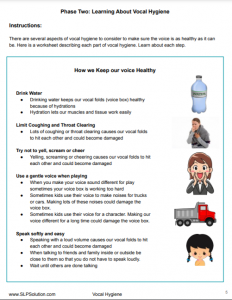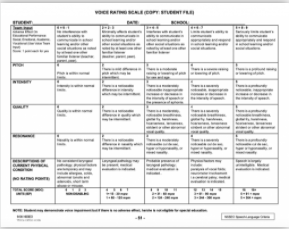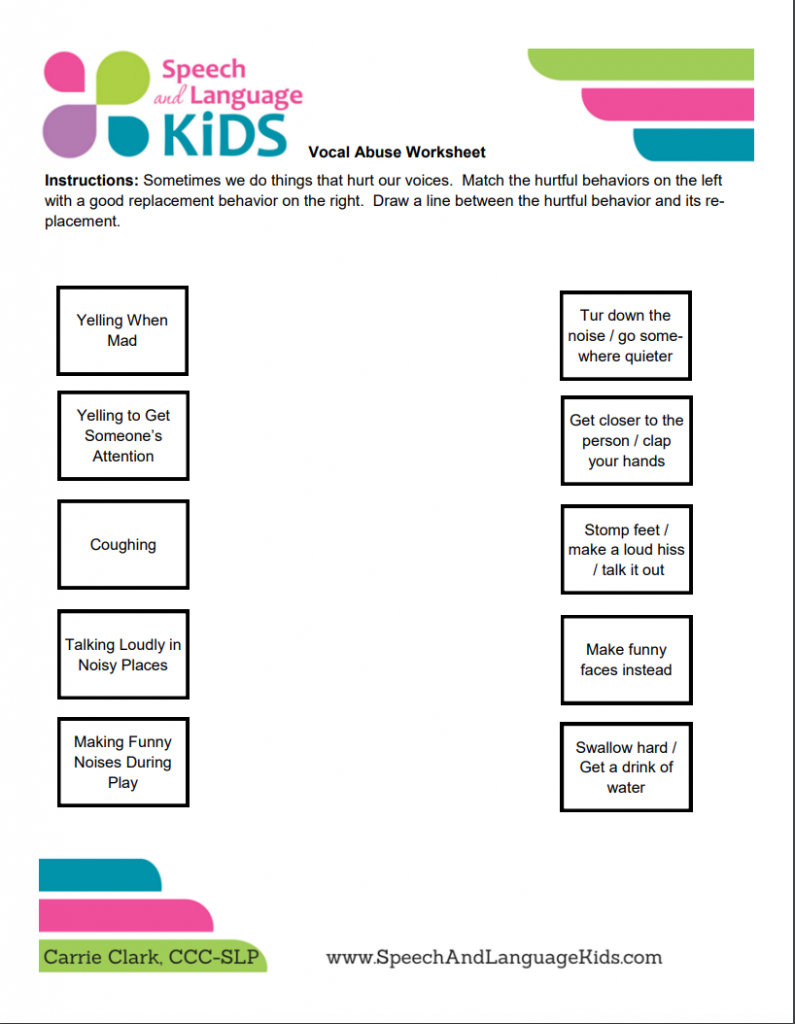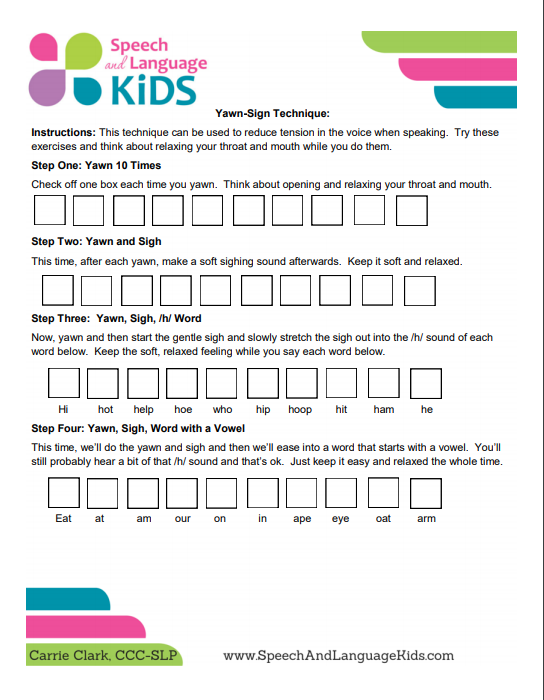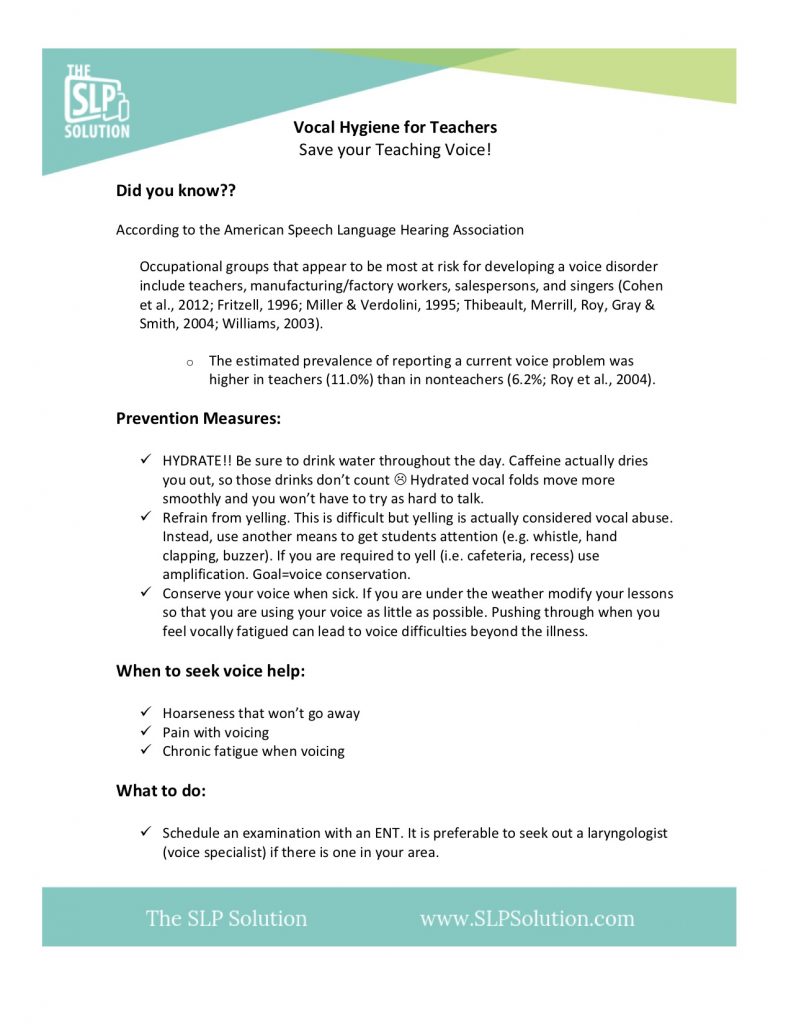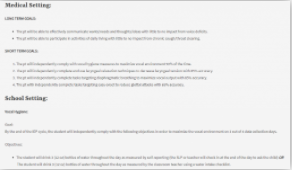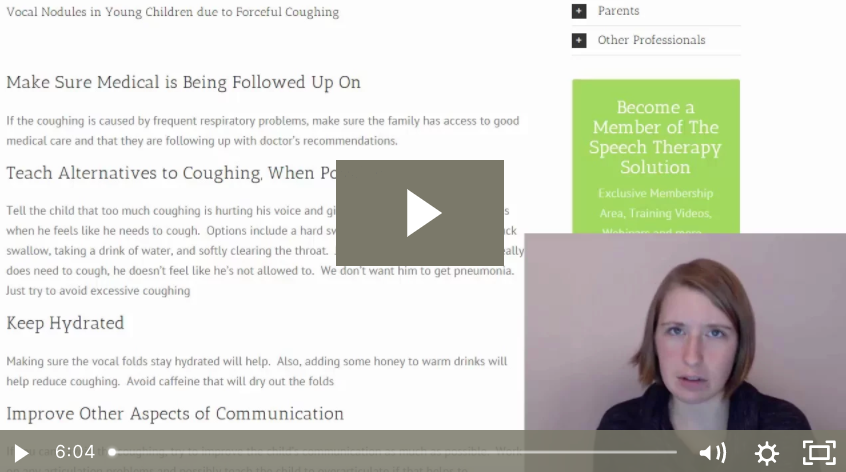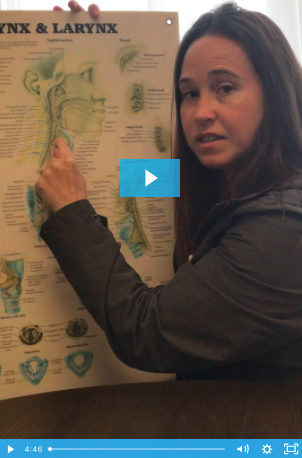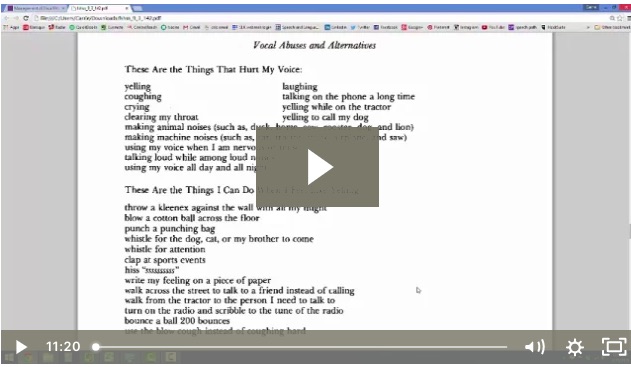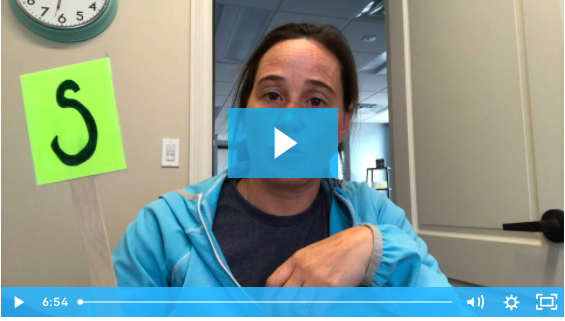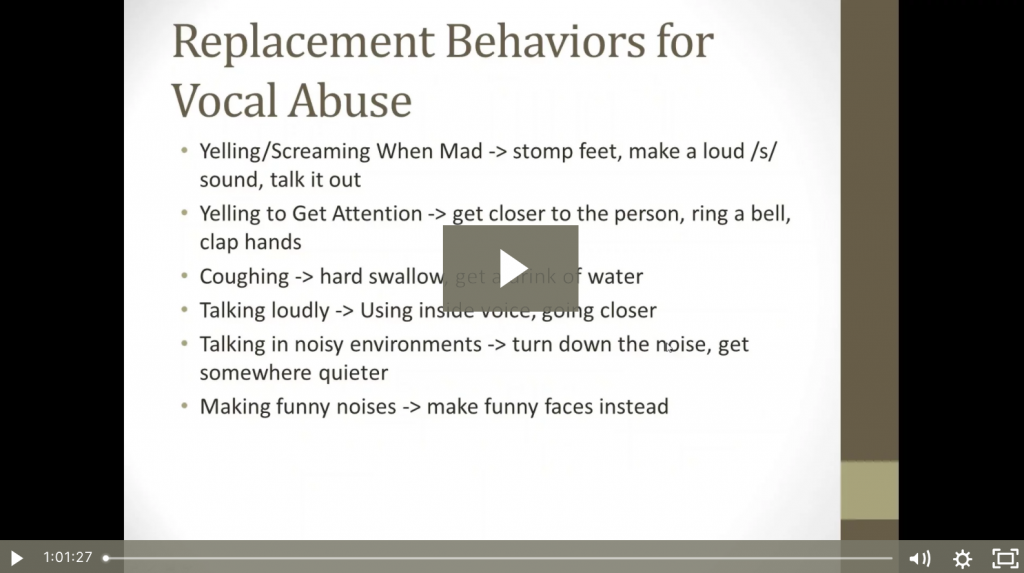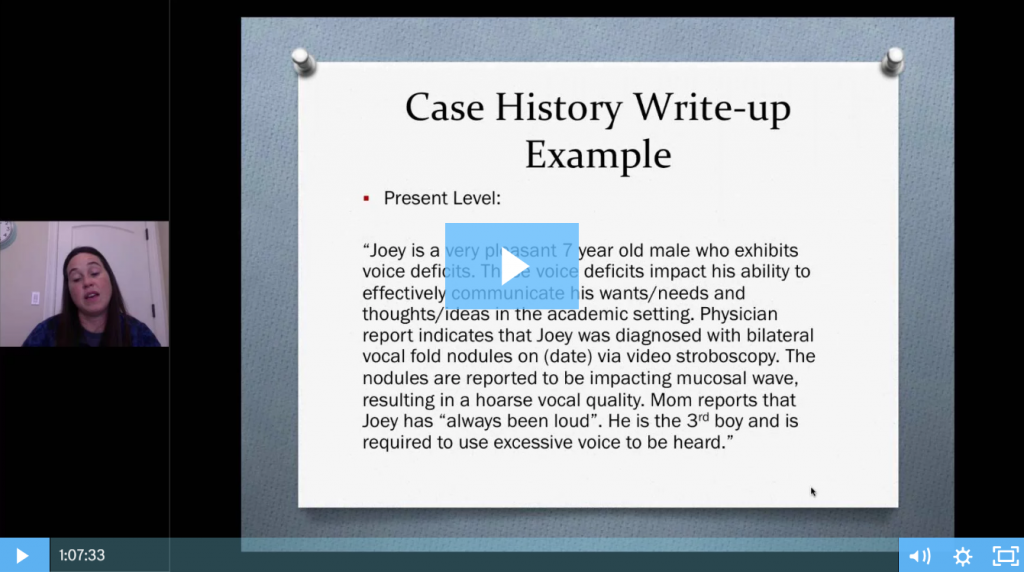Goal: Improve Vocal Hygiene
Long Term-Ultimate Goal:
Client will comply with vocal hygiene measures 85% of the time.
Download the No-Prep Therapy Kit:
We have a start-to-finish therapy kit that will give you everything you need to practice this skill in therapy and send home homework. Click the packet below to open it. Then, print it out and place it in the child’s notebook or binder.
Therapy Phases:
- Refer to ENT: All clients who are referred for voice issues should be seen by an ENT first to check laryngeal structure and function in order to be cleared for therapy.
- Education: Client will demonstrate understanding of vocal hygiene by identifying and describing 3 aspects with 90% accuracy on 3 out of 4 data collection days.
- Water Intake: Client will track liquid intake and report drinking at least 5 glasses of water 4 days per week as reported by hydration journal.
- Vocal Abuse/Misuse Identification (in therapy): Client will identify when he/she displays a vocally abusive behavior during a structured task 85% of the time on 3 out of 4 data collection days.
- Vocal Abuse/Misuse Identification (natural setting): Client will identify when he/she displays a vocally abusive behavior during communication in a natural setting 85% of the time on 3 out of 4 data collection days.
- Vocal Abuse/Misuse Replacement (in therapy): Client will replace vocally abusive behavior with a healthy vocal behavior with no more than 2 prompts during a therapy session on 3 out of 4 data collection days.
- Vocal Abuse/Misuse Replacement (natural setting): Client will independently replace vocally abusive behavior with a healthy vocal behavior within a natural setting 85% of the time on 3 out of 4 data collection days.
Supplemental Materials
Here are some other resources that may help you when working on this skill:
Have the child help you come up with a replacement behavior that feels natural to him and that he thinks will help him get that need met. Talk about those replacement behaviors and make sure that he can tell you what an appropriate replacement behavior is for each of his vocally abusive behaviors. Here’s a simple worksheet to get the conversation started.
If you’re using the yawn-sign technique to reduce tension and work on easy onset, here’s a worksheet that will help.

